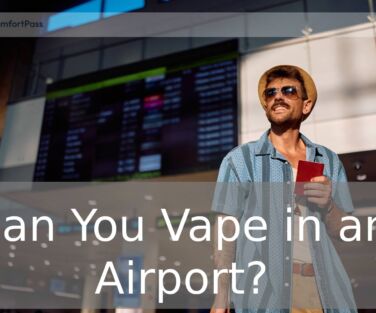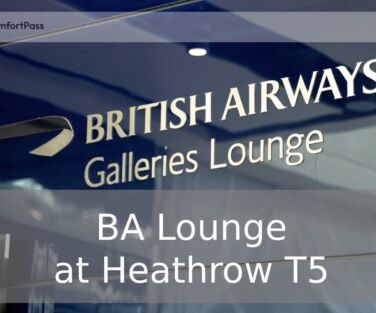
Can You Vape in an Airport? – The answer depends on the airport’s specific rules. Most airports prohibit vaping inside terminals, but some may have designated smoking areas where vaping is allowed.
Picture this: you’re rushing through airport security with your vape in hand, only to face confusion about where you can pack it, whether you can use it, and what happens if you break the rules.
You’re not alone—millions of travelers who vape face this exact scenario every day, often discovering the hard way that airport vaping regulations are more complex than they appear.
The stakes are higher than you might think.
Vaping violations can result in fines of up to $5,000 and possible arrest, as well as significant travel disruptions.
These regulations encompass a complex web of TSA policies, airline-specific rules, and international laws that vary significantly by location and destination.
Whether you’re a seasoned traveler or preparing for your first flight with a vaping device, understanding these rules is essential.
TSA Vape Rules: What You Can and Can’t Do
The Transportation Security Administration (TSA) has clear policies regarding vaping devices, but many travelers remain unaware of the specifics. Here’s what you need to know about TSA vape rules.
1. Vaping devices are allowed in carry-on luggage only and are strictly prohibited in checked baggage.
This rule exists due to safety concerns regarding lithium-ion batteries—these batteries can overheat, catch fire, or even explode in the cargo hold’s unpressurized environment, where crew members cannot respond to emergencies.
When packing your device, vaping devices must be completely turned off and protected from accidental activation.
This means removing any pods or cartridges and ensuring the device cannot be triggered during transport.
Many travelers use protective cases or tape over the activation button as additional safety measures.
2. Spare batteries require special attention and must be carried in dedicated battery carriers within your carry-on bags.
Never pack loose batteries directly in your luggage, as they can short-circuit and create fire hazards.
For e-liquids, the TSA’s 3-1-1 rule applies: containers must be 3.4 ounces (100ml) or smaller, fit in a single quart-sized zip-top bag, and be limited to one bag per passenger.
Empty pods and replacement coils can be packed more conveniently without liquid restrictions.
Disposable vapes should remain in their original packaging whenever possible. This helps security officers quickly identify the devices and demonstrates that you’ve purchased them legally.
NOTE: Always declare your vaping devices at security checkpoints if asked, and be prepared for additional screening procedures.
Where You Can Actually Vape in Airports
Understanding where you can vape in airports is crucial because most terminals have strict no-smoking policies.
The general rule is simple: vaping is only permitted in designated smoking areas, and these are becoming increasingly rare.
Several major airports still maintain smoking lounges or designated areas:
McCarran International Airport in Las Vegas offers multiple smoking lounges throughout its terminals, making it one of the most vape-friendly airports in the United States.
Nashville International Airport provides enclosed smoking areas, while Miami International Airport features an open-air atrium where smoking and vaping are permitted.
International airports often have different approaches. Frankfurt Airport and Dubai International Airport both provide indoor smoking rooms with proper ventilation systems.
These climate-controlled spaces provide a comfortable environment for travelers who need to use their devices during layovers.
However, most airports have eliminated indoor smoking areas.
Finding designated smoking areas in unfamiliar airports requires some planning. Check airport websites before traveling, look for signage near gates, or ask airport personnel for directions to the approved areas.
NOTE: Never assume you can vape anywhere else in the airport—security cameras monitor most areas, and violations result in immediate fines.
Airline-Specific Vaping Policies
Major airlines maintain strict vaping policies that go beyond basic TSA regulations. Understanding these airline-specific rules can help prevent surprises during your journey.
American Airlines, Delta, and Southwest Airlines all prohibit vaping onboard and explicitly forbid charging vaping devices during flights.
Their policies extend to all phases of flight operations, from boarding through disembarkation.
International carriers have equally stringent policies. British Airways, Emirates, and Qatar Airways strictly prohibit vaping and have specific procedures for handling violations.
Budget airlines like Ryanair often have the most detailed restrictions, including specific language about device inspection procedures.
Airlines prohibit onboard vaping for multiple reasons: fire safety concerns, passenger comfort, and federal aviation regulations.
NOTE: Violations of airline vaping policies can result in immediate removal from flights and may lead to permanent bans from the airline.
International Vaping Laws and Considerations
International vaping regulations present the most complex challenge for travelers because laws vary dramatically between countries and can change without notice.
Some countries have extremely strict vaping laws.
For example, several nations completely prohibit the importation of vaping devices, while others allow devices but ban nicotine-containing e-liquids.
- Researching destination laws before traveling is essential because ignorance of local laws is not a legal defense.
- Embassy websites and official government travel advisories provide the most reliable information about current regulations.
These sources update regularly and include information about recent law changes that might affect travelers. - Duty-free purchasing considerations also vary by location. Some airports allow duty-free vaping product purchases, while others prohibit them entirely.
- Check both departure and arrival country regulations before making any purchases.
- International travel also involves customs declarations in many countries.
- Properly declaring vaping devices and supplies prevents legal complications and ensures smooth entry into your destination.
NOTE: Vaping laws can change rapidly, and what was legal during your last visit might be prohibited now.
Consequences and Penalties for Violations
Understanding the penalties for vaping violations helps travelers appreciate the importance of following regulations carefully.
- Vaping in non-designated airport areas typically results in fines up to $500, immediate escort from the area, and potential delays to your travel plans.
Airport security takes these violations seriously because they affect other passengers and can trigger false fire alarms. - Vaping on aircraft carries much more severe penalties—fines can reach $5,000, and violators may face arrest upon landing.
- Travel insurance may not cover costs associated with flight delays or cancellations caused by your policy violations.
- Device confiscation policies vary by location and violation type. Improperly packed devices may be confiscated at security checkpoints, while devices used in prohibited areas might be seized as evidence.
NOTE: Legal implications vary significantly by country—what results in a fine in one nation might lead to imprisonment in another.

